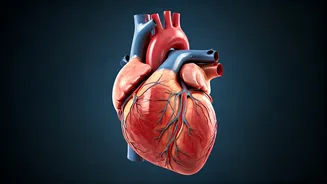Exercise's Powerful Impact
Regular physical activity is a cornerstone for maintaining healthy blood pressure levels. Aerobic exercises, such as brisk walking, jogging, cycling, and
swimming, are particularly beneficial. These activities strengthen the cardiovascular system, making the heart more efficient and reducing the force with which blood pushes against artery walls. Aim for at least 150 minutes of moderate-intensity aerobic exercise or 75 minutes of vigorous-intensity exercise per week. Incorporating strength training, which involves using weights or resistance bands, is another effective approach. Strength training helps build muscle mass, which can improve metabolism and, in turn, contribute to lower blood pressure. It's recommended to include strength training exercises at least two days a week, working all major muscle groups. Remember to consult your doctor before starting any new exercise routine, especially if you have existing health conditions.
Dietary Strategies Revealed
What you eat plays a huge role in controlling your blood pressure. The DASH (Dietary Approaches to Stop Hypertension) diet is widely recommended. It emphasizes fruits, vegetables, whole grains, and lean proteins, while limiting saturated fats, trans fats, and sodium. Embrace foods rich in potassium, as they help balance sodium levels and relax blood vessel walls. Bananas, spinach, sweet potatoes, and avocados are excellent sources of potassium. Magnesium, another vital mineral, contributes to blood pressure regulation; include nuts, seeds, and leafy greens in your diet. It’s also crucial to limit sodium intake, often found in processed foods, fast food, and excessive table salt. Read food labels carefully and aim for less than 2,300 milligrams of sodium per day, or even lower if your doctor advises. Consuming foods high in nitrates, such as beets and leafy greens, can also help lower blood pressure.
Daily Habits to Adopt
In addition to exercise and diet, several daily habits can make a significant difference. Managing stress is crucial, as chronic stress can elevate blood pressure. Incorporate relaxation techniques like deep breathing, meditation, or yoga into your daily routine. Aim for at least seven to eight hours of quality sleep each night. Lack of sleep can disrupt hormone balance, leading to increased blood pressure. Limit alcohol consumption, and if you drink, do so in moderation, which means up to one drink a day for women and up to two drinks a day for men. If you smoke, quitting is one of the most impactful things you can do for your health; smoking damages blood vessels and increases the risk of high blood pressure and other cardiovascular diseases. Regularly monitor your blood pressure at home, using a validated blood pressure monitor, and share the readings with your doctor.
Foods for Heart Health
Certain foods have particularly beneficial effects on blood pressure. Berries, such as blueberries, strawberries, and raspberries, are packed with antioxidants that protect blood vessels and reduce inflammation. Oats are rich in soluble fiber, which helps lower cholesterol levels and, consequently, reduces blood pressure. Leafy green vegetables like spinach, kale, and collard greens, are rich in potassium, magnesium, and nitrates, all of which support healthy blood pressure. Beets and beetroot juice also work well, thanks to their high nitrate content, which converts to nitric oxide in the body, helping to relax and widen blood vessels. Garlic contains compounds that have been shown to lower blood pressure. Including these foods regularly in your diet provides a powerful natural approach to supporting heart health and controlling blood pressure.













